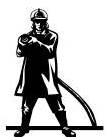| About Claim Solutions… |
Welcome
 Our Newsletter for Winter 2005 contains articles on earthquakes, actions required after a loss, the relevance of the accumulated stocks clause to the insured and their broker, the impact of overcharging and even a case of fumigation gone wrong.
Our Newsletter for Winter 2005 contains articles on earthquakes, actions required after a loss, the relevance of the accumulated stocks clause to the insured and their broker, the impact of overcharging and even a case of fumigation gone wrong.
Page 4 contains our regular list of possible insured events. There were too many to include in this newsletter and our website contains a more comprehensive database.
Numerous fires occurred over the past quarter. Chemical leaks, explosions and even damage from a molotov cocktails also occurred.
Our aim is to bring these matters to your attention to highlight both the need for insurance and the existence of our claim preparation service should a claim arise. We hope that all those who have sustained damage can minimise their loss and recover quickly.
Please contact us for claims assistance. Our readers’ feedback is always welcome.
Our newsletters have often tackled the subject of natural disasters. Tornadoes featured in Winter 2003 and Cyclones were covered in Autumn 2005. It is time to turn our attention to earthquakes.
Both the Mark IV and V Industrial Special Risks policy wordings respond to earthquakes. The earth’s crust is comprised of a number of tectonic plates which move in different directions. An earthquake occurs when the stresses caused by plate movement are released.
Australia is not on the edge of a plate but still experiences earthquakes as the Indian Australian plate is being pushed north against the Eurasian, Philippine and Pacific plates.
Adelaide has the highest earthquake hazard of any capital city. Australia's largest recorded earthquake occurred in 1941 at Meeberrie, WA, measuring 7.2 on the Richter Scale.
Many of us would remember the 28 December 1989 when a quake measuring 5.2 and lasting only a few seconds 15 km south east of Newcastle’s CBD rocked the region. Many buildings in the main shopping district were never constructed or modified to withstand an earthquake and extensive damage occurred.
One of the more recent earthquakes occurred on 20 April 2005. It measured 3.2 and its epicentre was near Yarram about 150km southeast of Melbourne.
If you wish to learn more about the earthquake risk there are some excellent sites on the web including Geoscience Australia at www.ga.gov.au.
 You have negotiated the spectators, the red and silver reflecting security tape. You stand in front of the charred remains of what was once a thriving business providing an income for both its owners and employees. Suits and ties have been replaced with overalls and gumboots as men rummage through the wreckage trying to identify the cause and salvage critical records. It’s like a war zone!
You have negotiated the spectators, the red and silver reflecting security tape. You stand in front of the charred remains of what was once a thriving business providing an income for both its owners and employees. Suits and ties have been replaced with overalls and gumboots as men rummage through the wreckage trying to identify the cause and salvage critical records. It’s like a war zone!
The days following the loss are often the most difficult but perhaps the most important.
It is critical that the owner of the business be given the information needed to make decisions regarding the future.
The owner needs to know how the insurance cover will respond. Whether it will place him in the position he would have been in if the fire had not occurred. He must understand his responsibility to minimise the loss.
Amongst the many onerous tasks following a loss the owner of the business needs to work through the insurance policy and: -
- Breakdown the material damage loss into workable components.
- Determine the Basis of Settlement for each category.
- Identify if replacement and reinstatement conditions apply.
- Determine what records need to be maintained.
- Consider any salvage value of damaged property.
- Establish a program for asset replacement.
- Engage contractors.
- Schedule regular meetings with loss adjusters, builders, contractors and claim preparers.
- Consider the impact of reinstatement procedures on the magnitude of the Business Interruption loss. Implement appropriate loss minimisation measures.
- Determine whether any underinsurance penalties apply.
- Identify and maintain the records necessary to substantiate the claim.
This is by no means a complete list of the tasks which need to be considered following a loss. Combined, Claim Solutions staff have in excess of 35 years experience assisting privately owned business and multinationals with claims issues.
If you or one of your colleagues requires assistance please do not hesitate to contact us.
Odd Spot - Of Cockroach Bombs & Pilot Lights
 News reports indicate that on 7 April 2005 firemen felt an explosion while sitting in their fire station in suburban Perth. Investigation revealed a fire in a neighbouring Thai Restaurant a couple of hundred metres away. It wasn’t the proximity to the fire station that made this fire odd it was the cause.
News reports indicate that on 7 April 2005 firemen felt an explosion while sitting in their fire station in suburban Perth. Investigation revealed a fire in a neighbouring Thai Restaurant a couple of hundred metres away. It wasn’t the proximity to the fire station that made this fire odd it was the cause.
In an effort to fumigate the restaurant the owner allegedly activated some 36 cockroach bombs inside the building. The product releases chemicals into the air to kill pests such as fleas and cockroaches.
News reports suggest 8 bombs would have been sufficient.
Unfortunately a pilot light from an oven ignited the chemically charged air resulting in a fire and explosion. The back wall & front windows were blown out and the ceiling caved in.
Always read the manufacturers instructions!
Business Interruption & Accumulated Stocks
 Gonzalez Wheels is a manufacturer of tyres for sports cars. The insurance broker, Harry, and the client, Speedy, meet just before the end of each financial year.
Gonzalez Wheels is a manufacturer of tyres for sports cars. The insurance broker, Harry, and the client, Speedy, meet just before the end of each financial year.
When they met last year (30 June 2004) Harry explained the need for Business Interruption insurance but was met with Speedy’s usual reply, “We’ll be right.” Harry cautioned Speedy to consider the effect a fire would have on the business; production would cease, sales may reduce, cash flow may be disrupted. Ever the optimist, Speedy informs Harry that if they had a fire Gonzalez Wheels would be unlikely to suffer a loss of profit.
On 20 December 2004 fire swept through the production facilities. Cause was attributed to an electrical fault. Some of the machinery could be repaired but much of it could not be salvaged and had to be imported from Germany. This took a month and production did not resume until 31 January 2005.
In June 2005 Harry arrived at Gonzalez Wheels expecting no opposition from Speedy in relation to accepting Business Interruption cover. Amazed he listened as Speedy explained that he still did not consider Business Interruption cover to be necessary. “Sure”, he explained, “production was restricted for about a month but finished goods were not destroyed and sales were maintained from accumulated tyre stocks. I told you I wouldn’t suffer a Loss of Profit!”
Tactfully, Harry enquired what level of finished goods was normally on hand at this time of the year. After shuffling through various documents, spreadsheets and budgets the eternal optimist replied, “About $500,000 at cost.” Harry then asked Speedy for the actual cost value currently on hand and is told it is only $300,000.
Harry explained that if he had taken Business Interruption cover Speedy may well have been able to make a claim under the Accumulated Stocks Clause. This would have compensated him for an equitable allowance for stock levels to be returned to normal if these had been depleted to maintain sales.
Unfortunately it took the experience of a loss and, even then, further convincing before Speedy finally understood the necessity for Business Interruption cover and is now confident of more checkered flags!
 Life following an insured event such as a fire is emotionally and physically draining. This and past newsletters have highlighted many of the tasks which need to be performed.
Life following an insured event such as a fire is emotionally and physically draining. This and past newsletters have highlighted many of the tasks which need to be performed.
In addition to appointing contractors it is important to implement a program to monitor the reinstatement costs including both the time worked and quality of the work performed. Most insurance policies understandably only respond to charges which are “necessarily and reasonably incurred”. They won’t respond to invoices for time not worked or tasks not completed to specification. In some instances builders forward their invoices direct to loss adjusters and the Insured has no opportunity of checking the charges against the work performed.
Always check the bill!
Claim Solutions provides a specialist insurance claims service. Our firm is recognised as one of the leading practices in this field with both national and international companies featuring amongst our clients. Our aim is to provide an efficient, professional and complete claims service which responds to your needs in times of crisis.
The Articles which appear in this Newsletter are not intended to be a substitute for specific technical advice.

